Asus RT-AX3000 router review
Asus introduced the RT-AX3000 router in 2019. It is powered by Broadcom BCM6750 @ 1.5 GHz chipset, 512 MB of RAM, and 256 MB of flash memory.
Want to know if this Asus router stands out? Stay with us!
Table of Contents
- Asus RT-AX3000 specifications
- Body, dimensions, weight
- System, chipset, RAM, flash, power supply
- Network, protocols, WAN and LAN ports
- Wireless, antennas, speed, security
- Connectivity
- Administration, user interface, login information
- Links
- Verdict, Pros and Cons
- Photos
- Comparisons
Our personal experiences and opinions form the basis of this article. We aimed to share insights on a topic, and we hoped others would find it useful and inspirational. If you noticed any mistakes or missing details about the Asus RT-AX3000, please let us know.
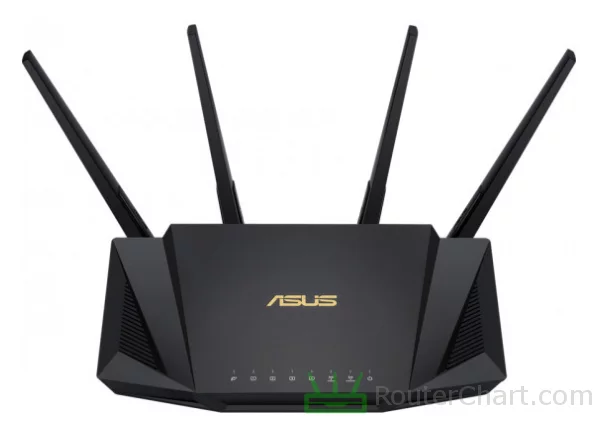
The RT-AX3000 is a versatile router that offers more than basic functionality. It provides a fast network for homes and offices. Asus has a history of introducing innovative features and technologies into its products.
Asus RT-AX3000 specifications
| Brand | Asus |
|---|---|
| Name | RT-AX3000 |
| Type | RT-AX3000 |
| Rating | |
| Launch | 2019 |
Body
| Dimensions | 224 x 160 x 129 mm |
|---|---|
| Weight | 538 g |
If you plan to move a lot and need to take your router with you, the size is important. Otherwise, the size isn't too crucial. The weight of a router can matter in some situations. But it's usually not as crucial as other factors.
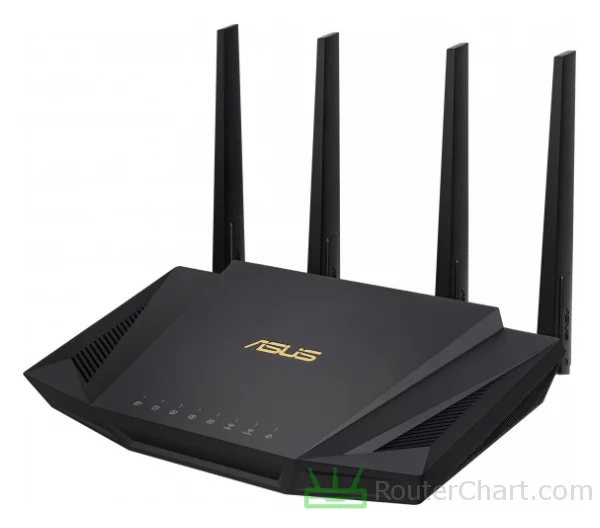
System
| Chipset | Broadcom BCM6750 @ 1.5 GHz |
|---|---|
| RAM | 512 MB |
| Flash | 256 MB |
| OS | Asus |
| Power supply | 19 V / 1.75 A |
The Broadcom BCM6750 @ 1.5 GHz CPU provides processing power. The amount of RAM in a router affects its performance and ability to handle tasks and traffic.
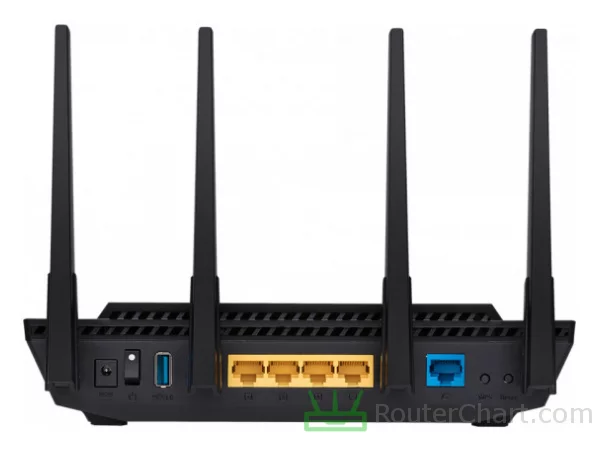
Network
| Protocols | IPv4 IPv6 |
|---|---|
| LAN ports | 4 x 10/100/1000 Mbps |
| WAN ports | 1 x 10/100/1000 Mbps |
| Mobile network | yes, with USB dongle |
| VPN support | PPTP L2TP OpenVPN IPSec |
The router also supports IPv6. This allows you to use the latest Internet Protocol. This router has Gigabit Ethernet LAN ports. They provide data transfer speeds of up to 1000 Mbps. The RT-AX3000 ensures that you can use fast internet from your ISP fully. You can connect the 3G/4G USB dongle to the USB port on the RT-AX3000 router. OpenVPN is a full-featured SSL VPN solution. It extends secure networks using SSL/TLS, an industry standard. IPsec is a popular network protocol that enhances the security of IP communications.
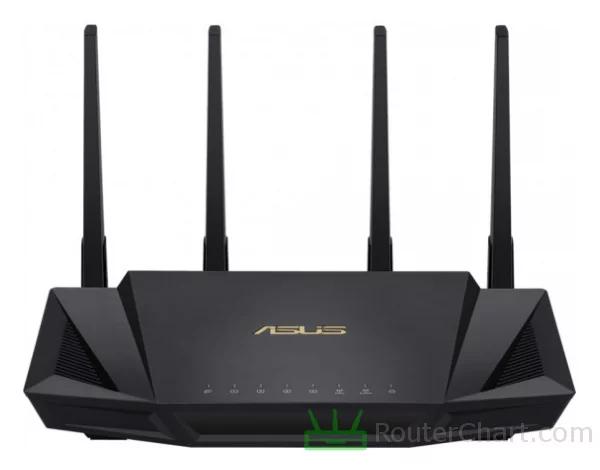
Wireless
| Antennas | 4 x 3 dBi fixed |
|---|---|
| 2.4 GHz | yes |
| 5 GHz | yes |
| 60 GHz | no |
| Standards | IEEE 802.11a/b/g/n/ac/ax |
| Class | AX3000 |
| Speed | 574 + 2402 Mbps |
| Transmit power | 29 dBm |
| Security | WEP WPA WPA2 WPA3 WPS |
| Guest network | yes |
The RT-AX3000 is compatible with 2.4 GHz Wi-Fi networks. Using the 5 GHz band can move some devices from the crowded 2.4 GHz band. This AX Wi-Fi router provides much faster data transfer rates. It is faster than older Wi-Fi standards. The introduction of WPA2 (Wi-Fi Protected Access 2) improved upon WEP. It provides stronger security. The WPA3 (Wi-Fi Protected Access 3) is the latest Wi-Fi security protocol. The Wi-Fi Protected Setup (WPS) lets you join a safe wireless network with the push of a button or a simple PIN entry.

Connectivity
| USB ports | 1 x USB 3.1 |
|---|---|
| Print server | yes |
| File server | yes |
The USB 3 ports provide a fast interface for external storage with data transfer rates of up to 4.8 Gbps. By connecting a USB printer to the RT-AX3000 router, you can make it accessible to all devices on your network. This router has a USB file server. It lets you connect external storage devices to your network.
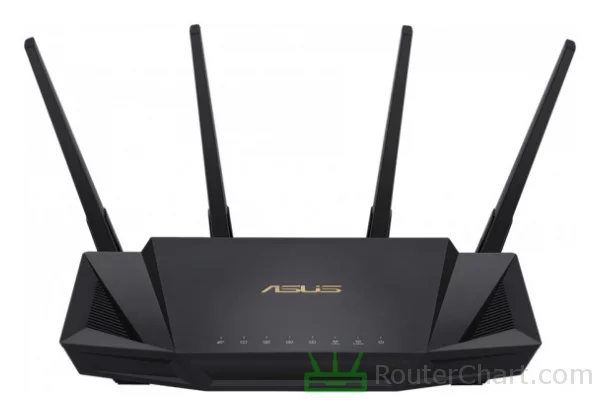
Administration
| Default IP | 192.168.1.1 |
|---|---|
| Default username | admin |
| Default password | [blank] |
If you can't log in to your Asus router's setup panel, try resetting it. A reset can help you troubleshoot. It is highly recommended to change the default password of your RT-AX3000 router. Do this after the initial setup.
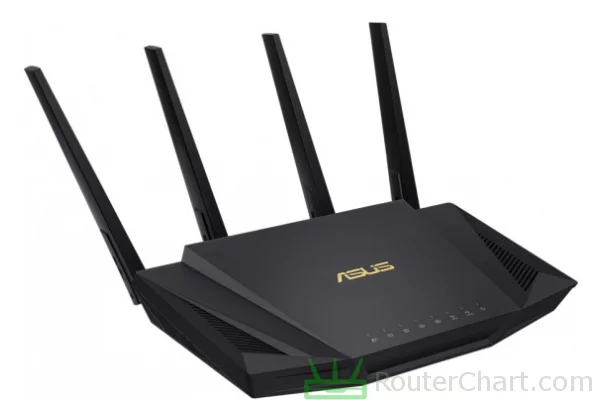
Links
| Official site | https://www.asus.com/ |
|---|
Pros and Cons
Every router, including this Asus one, has its good sides and not-so-good sides. Let's take a closer look at both to get a full understanding of what this router can do. Just remember, this is just what I think, and you might see things differently.
Pros
- generous memory
- plentiful flash
- IPv6 capable
- high-speed LAN port
- high-speed WAN port
- 3/4G USB modem capable
- supports OpenVPN
- works on 5 GHz band
- 802.11ax certified
- WPA3 compatible
- WPS friendly
- USB 3 compatible
- printserver functionality
- fileserver operation
Cons
- none
Asus RT-AX3000 photos





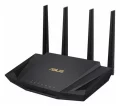


Asus RT-AX3000 comparisons
We've noticed that many of our visitors like to compare the Asus RT-AX3000 router with these popular models.
If there’s information about the Asus RT-AX3000 that you would like to see on this site, then write to us.
Updated: May 25, 2024





